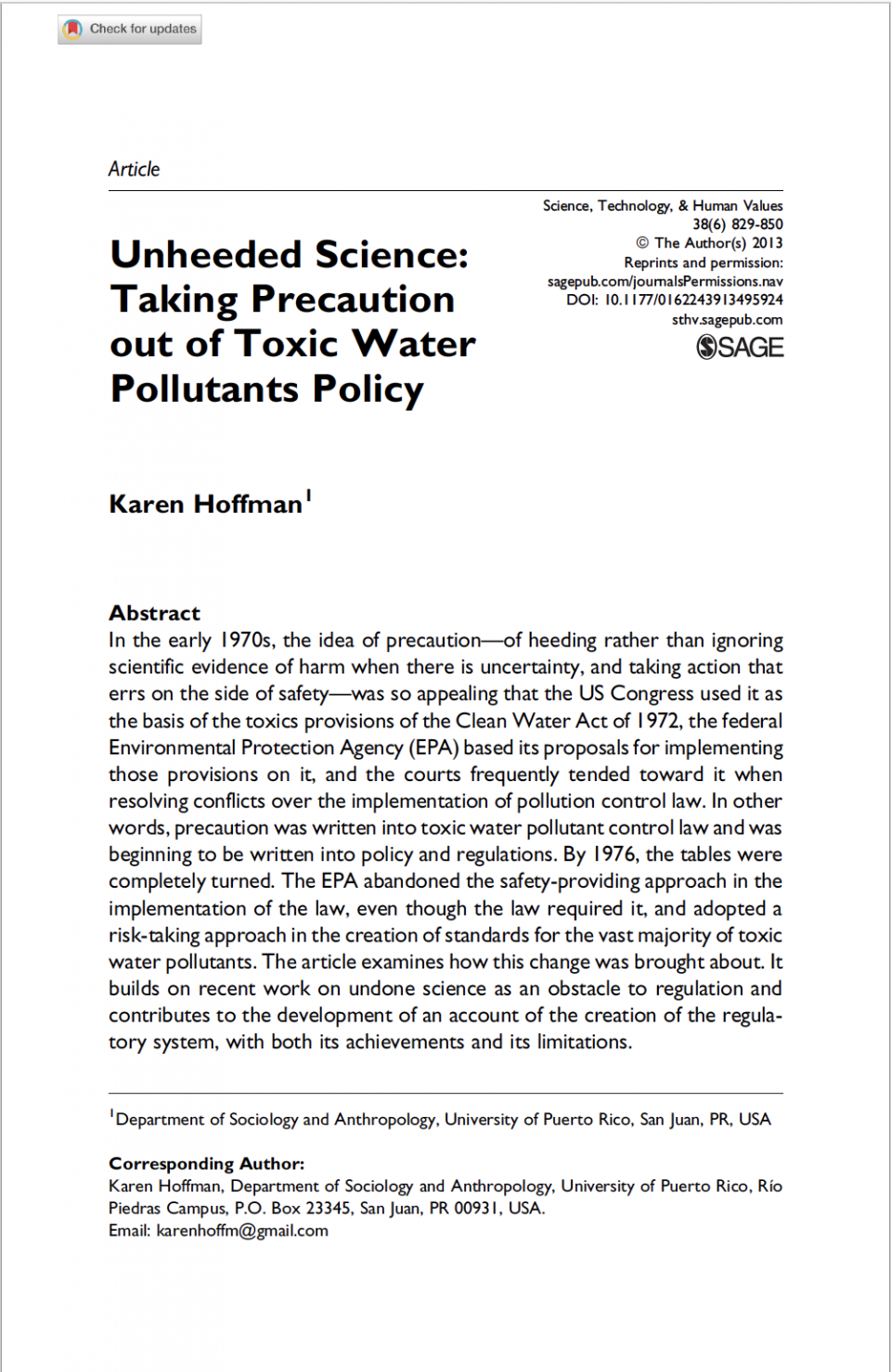ARTICLE ABSTRACT: In the early 1970s, the idea of precaution "of heeding rather than ignoring scientific evidence of harm when there is uncertainty, and taking action that errs on the side of safety" was so appealing that the US Congress used it as the basis of the toxics provisions of the Clean Water Act of 1972, the federal Environmental Protection Agency (EPA) based its proposals for implementing those provisions on it, and the courts frequently tended toward it when resolving conflicts over the implementation of pollution control law. In other words, precaution was written into toxic water pollutant control law and was beginning to be written into policy and regulations. By 1976, the tables were completely turned. The EPA abandoned the safety-providing approach in the implementation of the law, even though the law required it, and adopted a risk-taking approach in the creation of standards for the vast majority of toxic water pollutants. The article examines how this change was brought about. It builds on recent work on undone science as an obstacle to regulation and contributes to the development of an account of the creation of the regulatory system, with both its achievements and its limitations.

Karen Hoffman, "2013. Hoffman. "Unheeded Science: Taking Precaution out of Toxic Water Pollutants Policy"", contributed by James Adams, STS Infrastructures, Platform for Experimental Collaborative Ethnography, last modified 7 June 2018, accessed 2 April 2025. https://stsinfrastructures.org/content/2013-hoffman-unheeded-science-taking-precaution-out-toxic-water-pollutants-policy
Critical Commentary
In this 2013 article, Karen Hoffman builds upon the concept of "undone science" with her discussion of "unheeded science" and her analysis of how and why the US EPA switched from a precautious approach towards inconclusive scientific evidence of toxic pollutants, to a risk-taking approach that left the knowledge of the possibility of toxic drinking water go "unheeded."